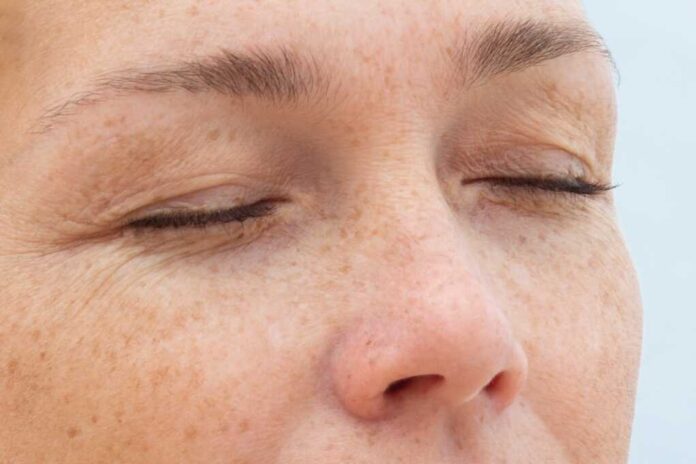
What if the secret to firmer, younger-looking skin isn’t just buried in creams or clinics, but hidden in the daily choices you make and the sunlight you chase?
Story Snapshot
- Three main culprits—natural aging, sun exposure, and lifestyle—drive skin sagging, but the right interventions can dramatically slow or reverse the process.
- Collagen and elastin loss set the stage for visible skin laxity, while UV rays and poor habits accelerate the decline.
- Women face unique challenges due to hormonal shifts and thinner skin structure, making targeted prevention essential.
- Breakthroughs in non-invasive treatments and everyday prevention now offer hope for anyone fighting gravity.
How Aging and Biology Betray Your Skin’s Firmness
Collagen and elastin are the scaffolding beneath your skin, but after age 30, your body’s ability to replenish them drops sharply. This decline isn’t just cosmetic—it’s a biological certainty, meticulously documented since the early 20th century. As layers thin and support weakens, cheeks soften, jawlines blur, and confidence takes a hit. For women, menopause triggers dramatic hormonal shifts, further undermining skin’s resilience. The science is clear: aging is inevitable, but the rate and severity of sagging can be managed with targeted nutrition, topical retinoids, and expert guidance.
Watch:
Sun Exposure: The Unseen Assassin of Youthful Skin
Ultraviolet radiation doesn’t just tan; it systematically destroys the proteins responsible for firmness. Since the 1970s, studies have pinpointed photoaging as the chief external enemy of youthful skin. Sun worshippers suffer accelerated sagging, marked by deep creases and leathery texture. Even brief exposure without protection adds up over decades. Sunscreen, wide-brimmed hats, and protective clothing aren’t just summer accessories—they’re your best defense against the clock. Widespread adoption of sun-blocking habits has curbed some damage, but many still gamble with UV rays, unaware of the long-term consequences.
Lifestyle Choices: The Silent Saboteurs in Everyday Habits
Smoking, poor diet, and rapid weight loss conspire to weaken skin’s structure, often silently. Nicotine reduces blood flow, choking off nutrients and oxygen vital for skin repair. Crash diets strip away fat that helps plump and support facial contours, leaving skin loose and lifeless. A diet devoid of antioxidants and healthy fats accelerates oxidative damage, deepening the lines of age. The evidence is overwhelming: those who smoke or neglect nutrition age faster and suffer more pronounced sagging.
Yet, lifestyle is also the factor most under your control. Quitting smoking, embracing a balanced diet rich in vitamins, and maintaining a stable weight can dramatically slow the clock.
Expert Consensus: Prevention and Innovation Are Transforming Aging
The American Academy of Dermatology and Cleveland Clinic both highlight a two-pronged strategy: proactive prevention and cutting-edge intervention. Peer-reviewed studies confirm that a combination of sun protection, healthy living, and expert-guided treatments yields the most dramatic improvements. For women, addressing hormonal shifts with medical support can slow deterioration and support lifelong skin health.
The cosmetic industry’s rapid growth mirrors rising demand as more adults seek to reclaim youthful contours. Today, non-invasive procedures are safer, more effective, and widely accessible. Still, leading voices in dermatology urge caution: not every product or procedure delivers on its promise. The wisest path remains rooted in science—shield your skin, nourish your body, and consult professionals for tailored solutions.
Sources:
PMC: Skin Aging Mechanisms
PMC: Hormonal Influences on Skin
Mayo Clinic: Wrinkles & Causes
Penn Medicine: Facial Aging Overview
Dr. Fedele: Why Does Skin Sag?
MedlinePlus: Aging Changes in Skin
AAD: Firm Sagging Skin
Cleveland Clinic: Crepey Skin Solutions


















